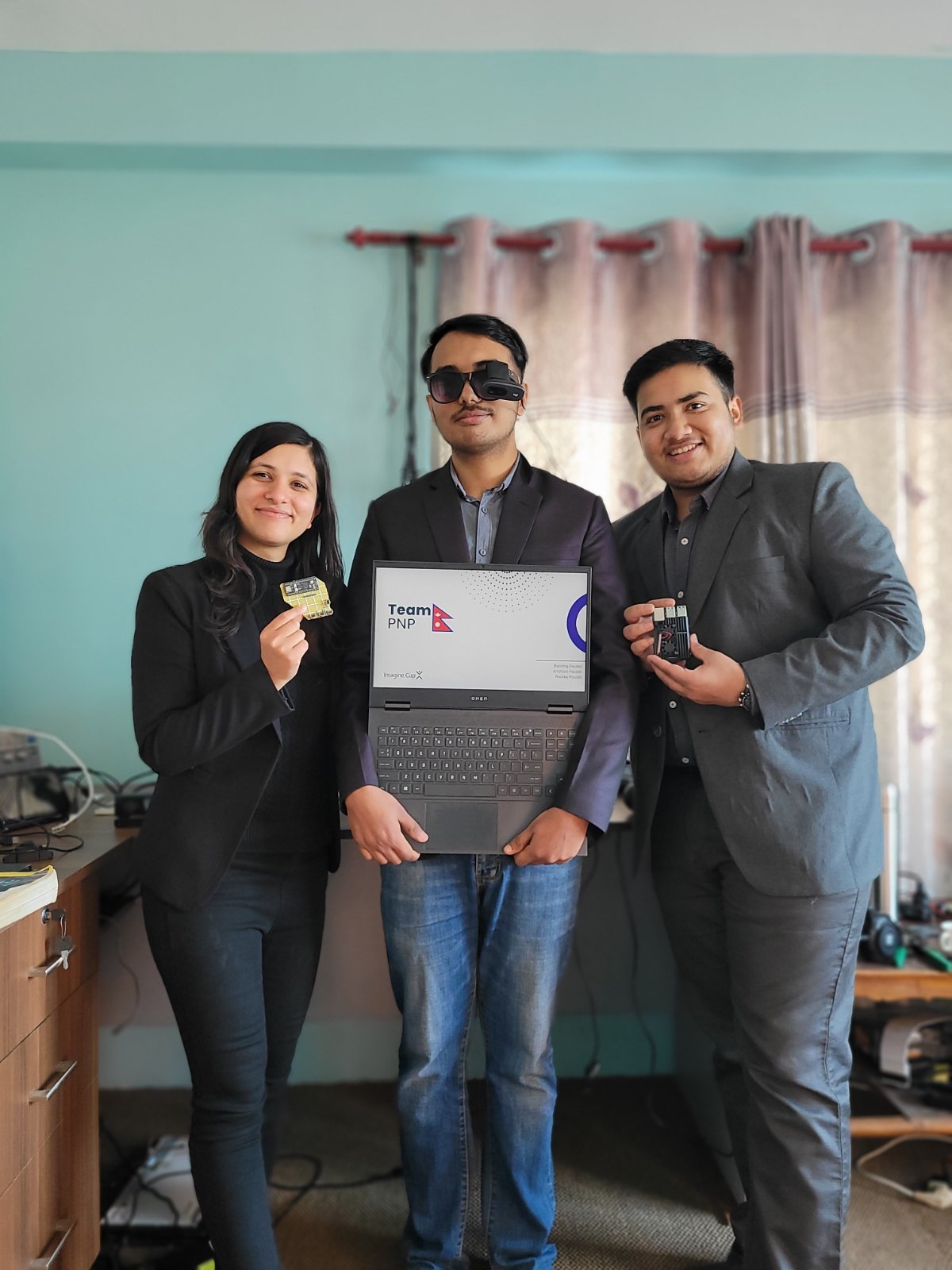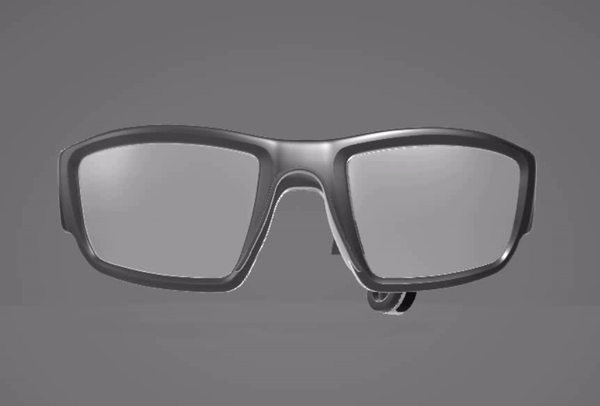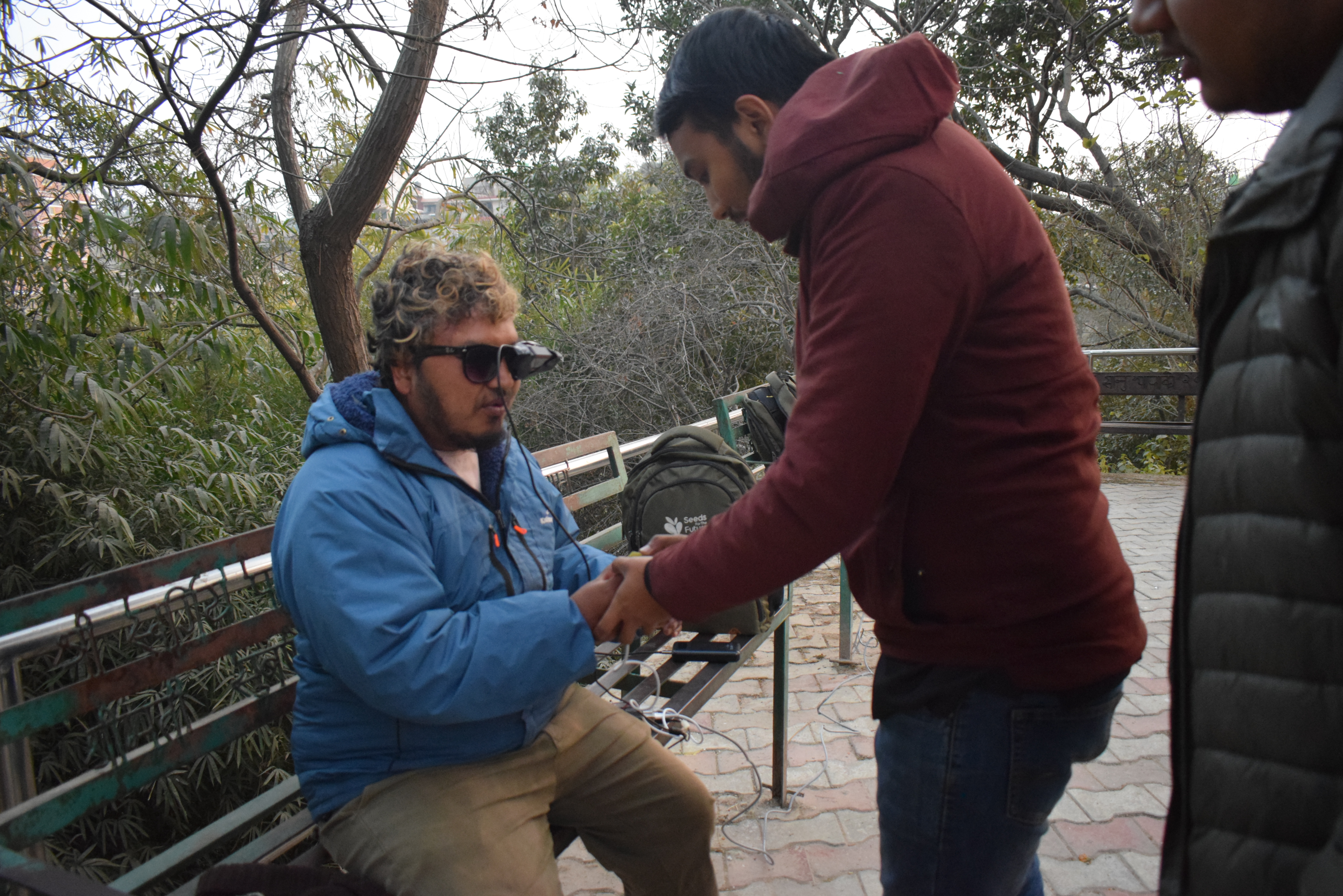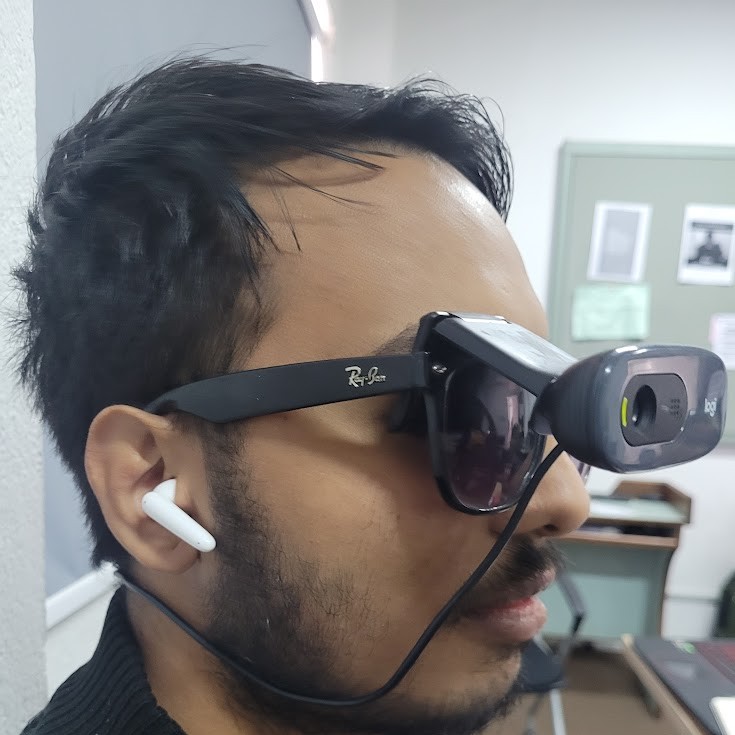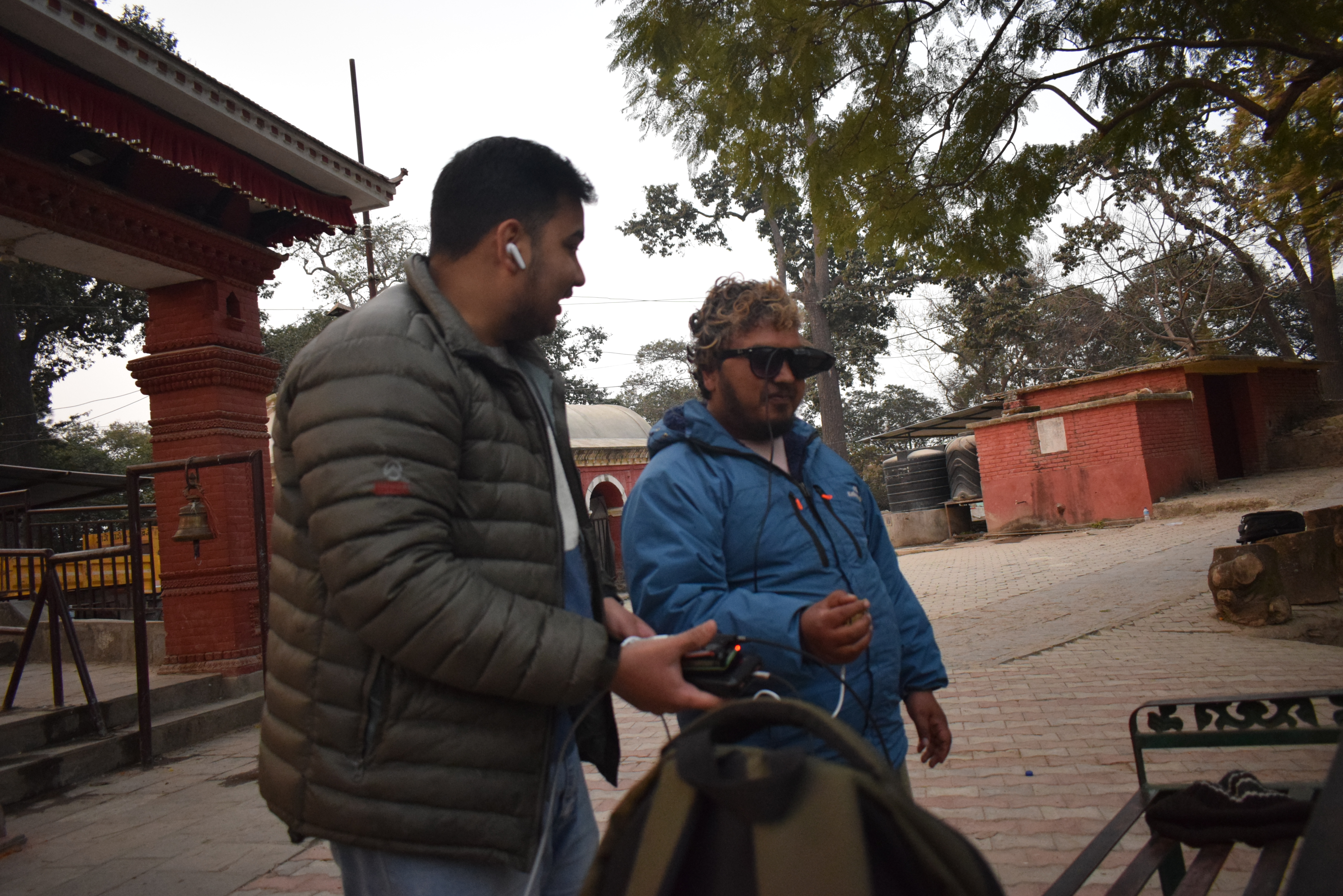Team PNP
PUBLIC
Nepal, Tribhuvan University
Members

krishbin paudel
ADMIN
Nepal

Nadika Poudel
ADMIN
Nepal
Team Gallery
Project Overview
Problem Statement:
Accessibility is an afterthought, be it an improvement in society, culture, or technology. Though we have millions of dollars invested in the field of Metaverse, for people who can see; what about the people who cannot see?
There has not been any technological advancement for people who are not able to see. We have advanced far ahead technologically, but these advances mean nothing to those people who are not able to see them. Rarely do we encounter devices that are meant for disabled people. Has accessibility been a tech highlight by big companies while they are announcing their new product? The advancement feels misaligned.
About 90% of the world's visually impaired live in developing countries. Visually impaired people can’t easily recognize obstacles, people, travel routes, or stairs while using a normal blind stick. They struggle with their day-to-day life and everyday activities. No safety features are present on the normal blind stick which is mostly used by visually impaired people as their visual aid.
Proposed Solution (Our prototype)
Now there are other technical solutions like Smart Blind Stick using sonic sensors and Smart Glasses that provide OCR but these solutions still have many drawbacks like Blind Canes are not able to detect obstructions that are hidden but are very dangerous such as downward stairs or potholes. Usually, the feedback information comes out as either vibration or sound signals. Our solution is to develop smart glass, unlike any other glasses.
Our smart glass will not only be able to predict the objects but also find their location in terms of bounding boxes. The impaired person will be provided with the information through speakers that would be attached to their smart glasses. The bounding boxes in the field of view of the camera will be entertained to the ears of the user with a simple location-based quadrant mapping with a central field. If an object is in any of these locations, its position along with the object type will be played through the speakers. This enables the user to be conscious of their surroundings.
We will be connecting smart glasses with a protocol-like matter which will be able to integrate with all the smart devices that are present throughout the house making the life of the disabled much easier. Also, different existing solutions and services developed for people who can see will be integrated making them feel welcomed. Main examples include map services to help them navigate, Traffic signal integrations to help them cross the road, the status of different home appliances, and so on. This solution makes the day-to-day activity of the specially-abled much easier. Our solution is to create technology to bridge the gap that is present currently between disabled people and existing smart devices.
How do we prioritize in case of multiple objects in the F.O.V?
We use the following algorithm to choose the best object in the scene:
- Objects in the center of the field are more prone to be selected because we set a focal point straight in front of the glasses (the focus shifts with the movement of the user's head),
- The objects with bigger bounding boxes are then given more priority as it results in closer objects,
- Bounding boxes with higher prediction scores have some weight in which the final box is to be selected.
How do we aid users to direct toward the detected object (Only for prototype)?
The F.O.V. is divided into 5 regions that distinctly distinguish where the object is. Each region is logically divided in the view of the user wearing the device. Here, "L" refers to the left from the user's view, "R" refers to the right from the user's view, "T" refers to the top from the user's view, "B" refers to the bottom from the user's view and "C" refers to center from the user's view. A combination of any of them maps them to a particular region in the F.O.V.
About Team
Krishbin Paudel: Krishbin is a 3rd year electronics, communication and information engineering student at Institute of Engineering, Pulchowk Campus. He is an electronics hobbyist who likes to tinker and create new things. He has been working with electronics for 6 years. With his passion for electronics he has made projects like drones, football playing robots, automated farming, natural disaster detection e.t.c. which have recognised him with many awards.Recently he was involved in designing the XBEE communication of the robots that were used in ABU ROBOCON 2022 and achieved 2nd runner up position. He has earned an NCELL scholarship from the university recognized for his academic excellence. He is proficient with Linux development, Hardware Design and Development, Rapid Prototyping, Embedded Hardware. Currently he is learning RISC V architecture and design. You can connect with him at following sites:
Email: krishbin21@gmail.com
Github: https://github.com/krishbin
Nadika Poudel: Nadika is a Computer engineering student pursuing her undergraduate degree at Pulchowk Engineering Campus. She is interested in Machine Learning, Artificial Intelligence, and Blockchain technology. Apart from learning new technology, she is also engaged in community work. She is a mentor at Initiative for Girls in Physics and Technology, an organization of young women in technical fields,
empowering young girls in modern technology and innovations. She is also a Generation Google Scholar 2022, Grace Hopper Celebration Scholar of 2022, and Harvard WeCode Tech-fellow 2022. She was also one of the Asia Regional Finalists at Seeds for the Future, where she, along with her teammates, represented Nepal on a global platform with 15+ countries. As one of her most exciting projects, she has developed an app for autistic children which they can use to communicate with others and track their daily schedule, as research shows that autistic children do not mostly like direct communication. You can connect with her at the following sites:
Linkedin: https://www.linkedin.com/in/nadika-poudel/
Github: https://github.com/Nadika18
Portfolio: https://nadika18.github.io/devportfolio/
Banshaj Paudel: Banshaj is currently a student at Tribhuvan University, Kathmandu pursuing his undergrad degree in Computer Application and Information Technology. He is interested in developing solutions for real-world challenges using modern technologies and innovation. He is keenly interested in Backend Development and developing other solutions using Python. Apart from learning and implementing new technology and software, he is interested in learning about the Internet of Things (IoT), Scalable Code, and 3D model development, and he has a genuine interest in working with different tech communities. He is currently involved with AskBuddie, one of the prominent tech communities in Nepal, where he helps beginners get started with technology and address their tech-related queries. He is one of the Asia Regional Finalists in Seeds for the Future 2022, where he represented Nepal among 15+ countries in Thailand. His team presented a blockchain-based fraudulent detection system for pharmaceutical products and attended the Tech4Good Accelerator Camp in Singapore. As one of his exciting projects, he has contributed to ideating and developing a physical device solution for detecting illegal activities and natural calamities in a forest like Illegal Logging, Poaching, and Forest Fire. You can connect with him at the following sites:
Linkedin: https://linkedin.com/in/banshaj
GitHub: https://github.com/BhairuTribrid
Website: https://bhairutribrid.github.io/portfolio
Team Work:
For this project, everyone has contributed to each section despite their roles but justifying it, Nadika has contributed towards Machine Learning and backend development. Banshaj has worked with business development and researching statistics to predict if the idea is sustainable and efficient. Krishbin has designed the physical prototype and 3D model for the Minimum Viable Product (MVP). They have helped each other in the team with knowledge apart from their roles.
Technologies we are looking to use in our projects
Artificial Neural Networks
Azure
Internet of Things (IoT
Machine Learning
Medical Technology
Voice Assistance

